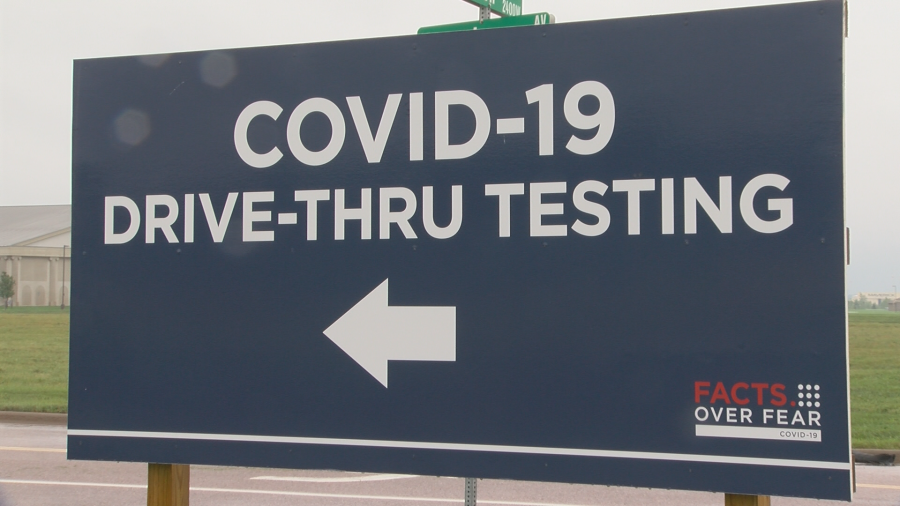SIOUX FALLS, S.D. (KELO) — They say hindsight is 20/20, but that’s also a year many people don’t like to think back to. The early months of 2020 brought COVID-19, a virus that is still impacting people’s lives today.
In March of 2020, the COVID-19 pandemic turned people’s lives upside down. While the entire world was affected, doctors say that South Dakota’s location and population gave us an advantage.
Not-so simple cattle industry
“When it first hit the coast, we still didn’t see much for cases. We didn’t know that much about it. And what it gave us was actually a three month lead where we could start preparing and start getting ready for what we knew was already in Washington and already in New York,” Chief Medical Officer, Sanford Health, Dr. Jeremy Cauwels said.
While social distancing was one of the ways to slow the spread of the disease, 5 years later, you’ve most likely had it.
“Whether you got vaccinated or not. Your body has probably seen 1 or 2 different versions of that coronavirus. And so the body’s ready and more capable of dealing with it,” Cauwels said.
But the virus continues to mutate and change. Over the past 5-years the disease has claimed over 3,000 lives in South Dakota. Dr. Cauwels says there is good news moving forward.
“What we’re not seeing as often is those horribly ill folks who end up in the intensive care unit on ventilators long term end up with permanent lung damage. And because that has tapered off. Our advice now is to treat it very much like any other infection you have, but certainly make sure you’re under your doctor’s care so they can help you through the highs and the lows,” Cauwels said.
While that is great news for people living in 2025, that doesn’t change what we went through in 2020.
When the virus first came to the United States, it sounded like students were just going to get an extra long spring break as everyone quarantined for 2 weeks. However, those 2 weeks turned into the rest of the school year for KELOLAND. This was a situation teachers had never dealt with.
“We played it out like any other illness or bird flu and just be cautionary. But then once we shut down and schools closed, then we had to quickly build lessons for kids,” SFSD assistant superintendent of academic achievement, Kirk Zeeck said.
The Sioux Falls School District gave students and their families the choice of what they wanted to do in the fall of 2020.
“We allowed some students to learn virtually that we had a virtual academy, which had thousands or over a thousand students who learned remotely and, otherwise students came in, they took desks and separated desks,” Zeeck said.
That 1,000 students the first year turned into around 100 the second year. While online learning provided an alternative option, it still came with challenges for some students.
“What happened when the pandemic hit, and from the test scores and our attendance and our graduation rates across the country and in Sioux Falls and in South Dakota, we saw a dip. So we saw a dip in all of those,” Zeeck said.
But thanks to the COVID funds the school district had received, those numbers have gone back up.
While the pandemic had a large effect on schools, it also affected churches. Many churches opted to have online sermons during the first stages of the pandemic, which happened to be over Easter.
“Easter’s the happiest time of the year in the church, it is the promise of God that our sins are forgiven and the resurrection of Jesus and it’s the most joyful time. And yet we were recording services in an empty church, preaching straight at a camera,” Pastor at Good Shepherd Lutheran Church, Michael Johnson said.
Learning to switch everything to an online format wasn’t an easy task.
“We had zero digital footprint. We didn’t stream our services, we didn’t have much of anything. Suddenly, we were overnight figuring out how can we stream our services? How can we provide online worship?” Johnson said.
While the church leaders had their struggles, the congregation also felt the effects of lockdown.
“When COVID first hit, we as pastors talked about what’s this going to do to our congregation? We talked about that isolation, the cabin fever, and how we would be needed even more in counseling and the tensions that can arise when you’re cooped up together. And that certainly happened,” Johnson said.
Another way that COVID hurt people was when they were unable to work. At Granite City, for around half of the year, they only had a skeleton crew.
“We had to close down for a little bit, and it was just left with a few managers to run the place, make sure we had to-go orders ready. We couldn’t really let a whole lot of people in, so we had to run all the orders out to the vehicles. And, we were basically just management staff from open and close,” Granite City general manager, Shane Bauer said.
Bauer says since COVID, it seems people don’t get too upset when heading to work.
“People love coming to work and, you know, seeing their friends, seeing their coworkers and just, you know, having a great time and once again, appreciating their job a lot more because, you know, it’s nice to be around people,” Bauer said.
In the winter of 2020, Granite City was one of the restaurants that put ice fishing shacks outside their restaurant, so that people could social distance, while also eating out. While the pandemic is over, Bauer says people still call asking if they’re going to bring back the ice shacks.
“It was kind of like having your own little restaurant and, you know, even if our employees had to put on a jacket, which we allowed them to do, you know, to serve people out there. The employees actually kind of loved it, too, and it was just so much fun to have them,” Bauer said.
Showing that even though COVID-19 changed the way we lived, maybe something good could have come out of the situation.







